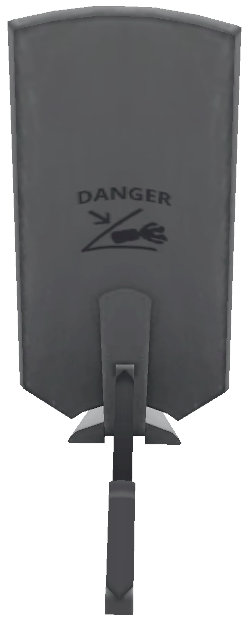A.I.R.B.R.A.K.E.S
From Kerbal Space Program Wiki
Revision as of 23:03, 1 November 2015 by Peteletroll (talk | contribs)
| A.I.R.B.R.A.K.E.S | ||
| Control surface by C7 Aerospace Division | ||
| Radial size | Radial mounted | |
| Cost | (total) | 1 000.00 |
| Mass | (total) | 0.050 t |
| Drag | 0.02 | |
| Max. Temp. | 2400 K | |
| Impact Tolerance | 8 m/s | |
| Research | | |
| Unlock cost | 20 000 | |
| Since version | 1.0 | |
| Part configuration | Airbrake.cfg | |
| Lift generated | 0.38 | |
| Cont. surf. portion | 100% | |
| Deflection range | 70° | |
| Actuator Speed | 20°/s | |
| Packed volume | 750 l | |
The A.I.R.B.R.A.K.E.S are the first, and so far only, stock speed brakes, introduced in version 1.0.
They fulfill two main functions:
- When activating braking (default key: B) they deploy to deliebrately increase air drag which reduces airspeed when flying through an atmosphere. This is especially useful for planes during landing, or spacecraft which are aerobraking, and want to decelerate faster.
- Airbreaks also act similar to control surfaces and will support the steering of a vehicle while flying through the atmosphere through selective deploying and undeploying. This makes them an alternative to winglets for stabilizing rockets during ascend. They have the advantage that they create far less drag while they are not used but far more when they are making them the most effective control surfaces in the game. Unfortunately the large amounts of drag generated to turn a craft quickly also has the effect of decelerating it quickly thus greatly diminishing there usefulness for rotational control on planes which greatly depend on speed to remain airborne.
They also work as a aero surface, with a lift rating of .38.
By default they are bound to the brakes action group, and any attempts to remove them from this action group will be removed if the craft is launched or saved and loaded.
Product description
| “ | Research into feasible ways to slow down a plane in mid-air showed that loose hull panels are pretty great as drag-inducing deceleration devices. The discovery led to the invention of the Aerodynamically Integrated Retrograde Braking Robustly Armed Kinetic Extending System (A.I.R.B.R.A.K.E.S.), which is now popular mostly as a cheap alternative to longer runways. C7 Engineers are still trying to come up with a shorter name for such a long acronym. | ” |
Changes
- Initial release


